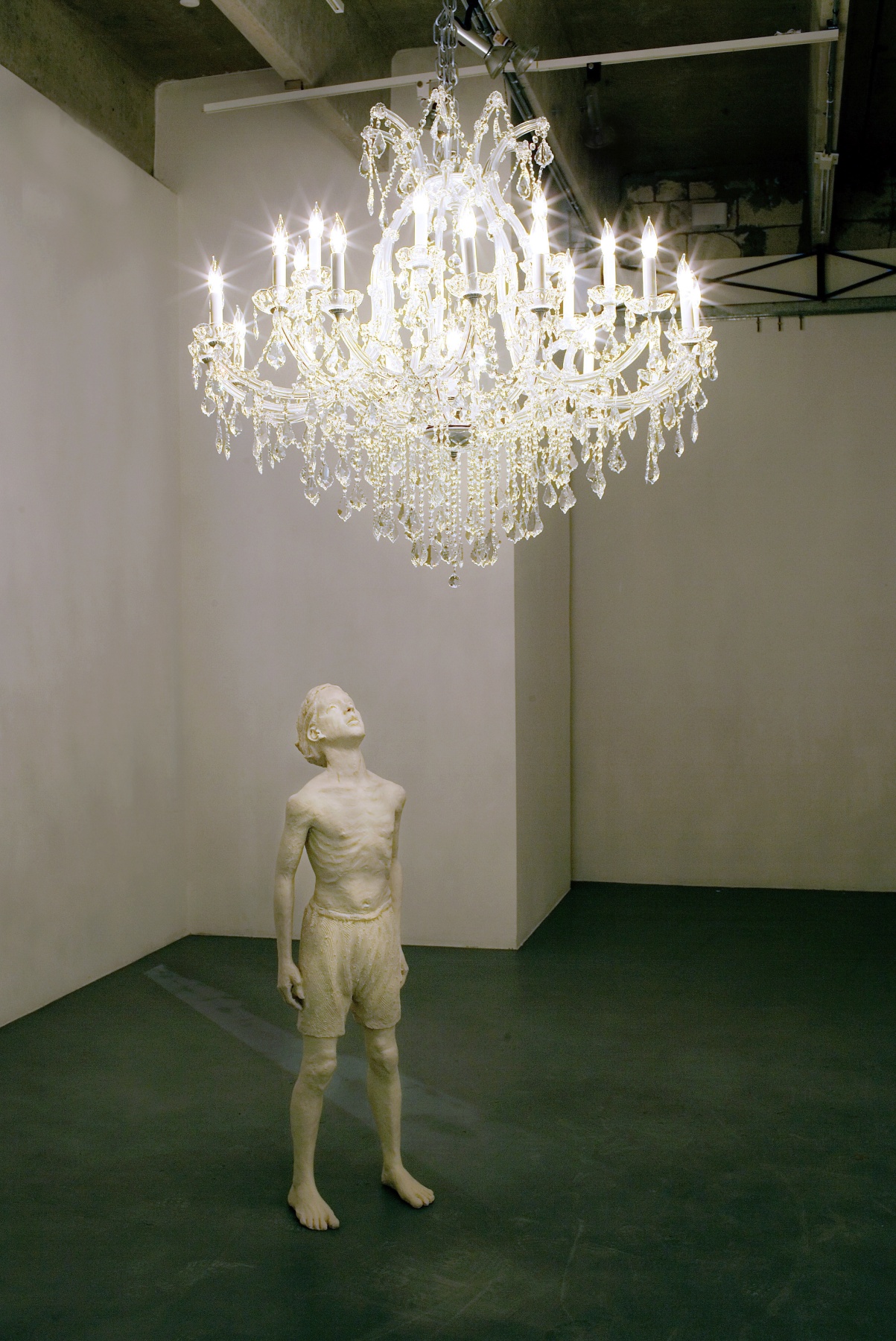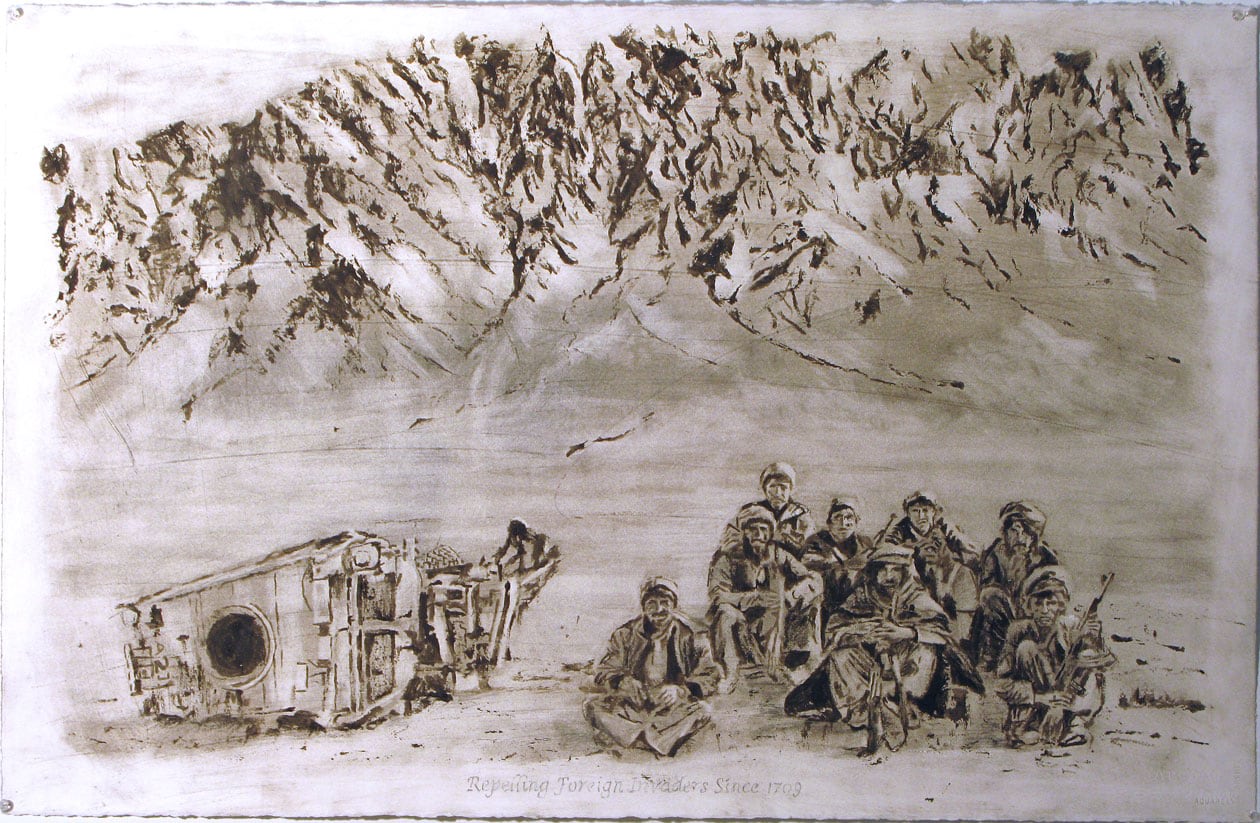James Croak’s newest installation exhibition at Stux Gallery offers an intriguing take on two basic, ubiquitous elements: light and earth. Croak's works create unsettling, spiritual studies of our uncertain times, and intimate studies of the anatomy of fear and anxiety.
In Chandelier Mistaken for God, a store-bought chandelier is discovered by a boy who appears to have just finished swimming on a warm summer day. The boy is startled, empowered, and utterly absorbed by the light from the interlacing flock of bulbs and crystals, as if he is experiencing the same exhilarating, inexplicable excitement of someone encountering an angel’s halo, a golden religious icon, or the glory of Aurora Borealis. It is a spontaneous, subliminal and physical experience of absolute truth that cannot be controlled or explained. However, the universal tendency to associate light with the divine is purified and replicated here with, jarringly, an almost Duchampian chandelier: an overtly ornate, artificial living room staple, designed to tame and edit the light which is deem to be holy.
A raw dirt drawing, Repelling Foreign Invaders, complements the gleaming installation. Inspired by Francisco Goya’s Disasters of War series, Croak creates an ominous, violent, eerie and oddly peaceful portrait of the war in Afghanistan. Unlike Goya’s grotesque and nightmarish visions, Croak’s representation of war is quiet and meditative. Soldiers sit calmly next to an unidentifiable broken machine, while undisturbed, unmistakably Afghan mountain ranges loom in the background. The composition is stable and balanced as the prolonged war has comfortably integrated into Afghanistan’s identity. “Repelling foreign invaders”, or war in general, is now a permanent state instead of an emergency national security response. The same material used by God to create the Afghan landscape--dirt--is also used to create the drawing itself, erasing the boundary between reality and the aesthetic realm and allowing the subject to literally present itself in the drawing. This way, Croak’s ideas of war are not only expressed as artistic, abstract concepts, but also a living, breathing manifestation, molded with dirt just like Adam and Eve.


